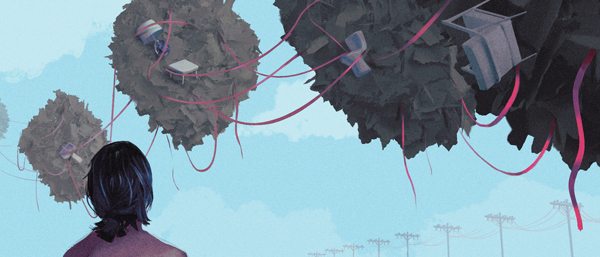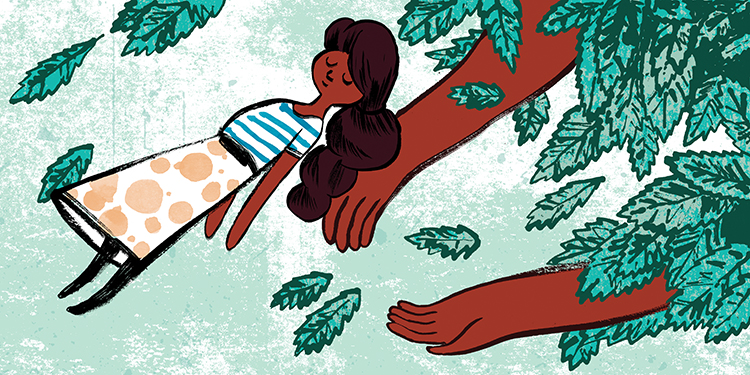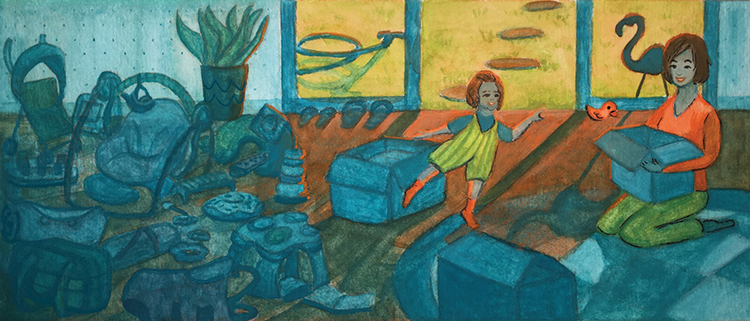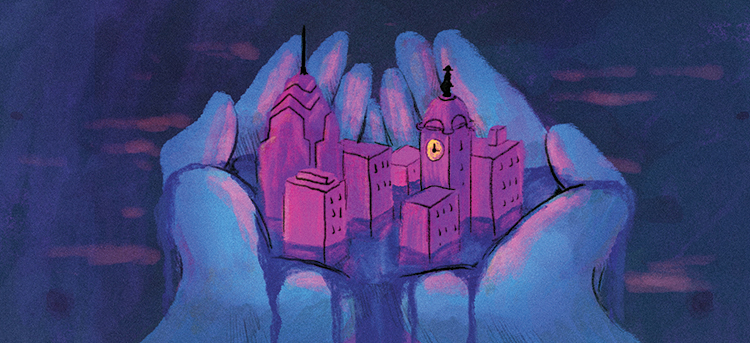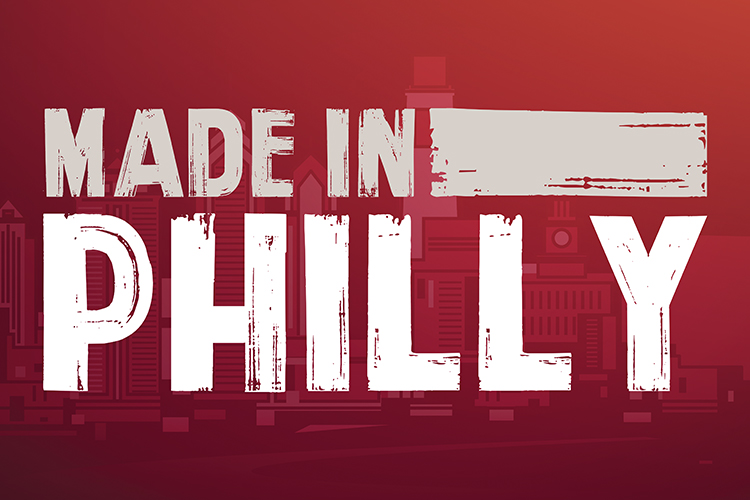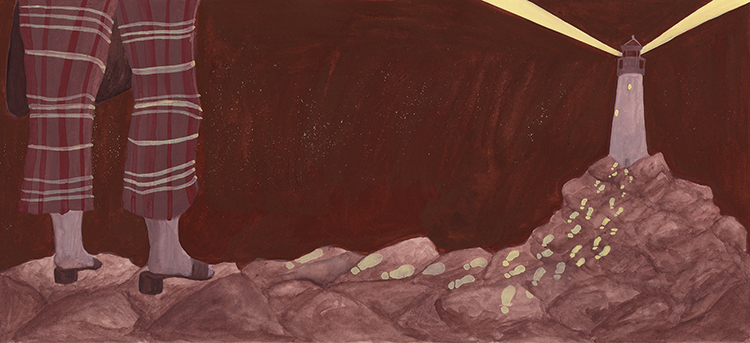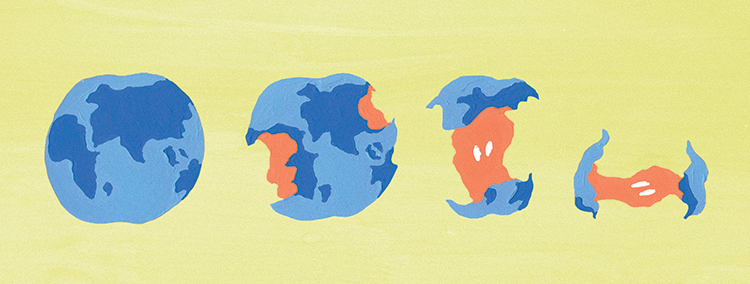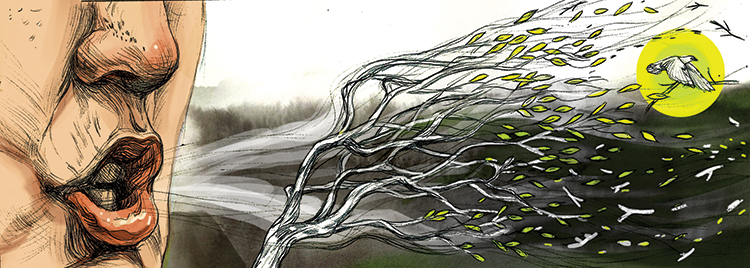Illustration by Corey Brickley
Lost and Found
by Christina P. Day
The day we came across a fake breast in a pink box, we thought it was funny at first—until further digging revealed the owner had endured breast cancer. A refrigerator arrived with a rock-hard frozen turkey still intact in its yellow netting. The day I found a complete dental cast of a middle-aged woman’s mouth, I stopped in my tracks.
Every time I pulled material from the heaps of waste dropped off at Revolution Recovery, a construction and demolition recycling center in the Tacony neighborhood of Northeast Philadelphia, it felt like I was reading a short story.
The amazing garble was shoved into one space to be heard together, as if I had simultaneously turned on the 18 radios I collected during my three-month artistic residency with RAIR, a nonprofit that works with artists to bring attention to the never ending stream of waste that our culture produces. Each day at Revolution Recovery, they sort through 250 tons of debris, and I was allowed to source materials from what was deposited.
My current body of art has me finding duplicates at different times and places—a process that can often take years—and conjoining them into sculptural forms. But the relentless pace of the material arriving each day allowed me to find duplicates within a few days as I sorted through wallpaper fragments, ladies’ pumps, architectural elements. My definition of a match shifted from seeking identical duplicates to finding a likeness: a decorative motif from separate drop-offs, a reoccurring color, or—in one important case—finding, through a series of photographs, the same person at different stages in their life.
Conclusions came fast as the pile was refreshed by another truck and driven further in with heavy machinery: Someone just died, and there is no family to collect this, or someone just lost everything. In another pile, an eviction: a drawer full of condoms, sunglasses, Polaroid photographs of toddlers dressed in matching basketball jerseys. Banknotes, junk mail, furniture, clothing, all of it. Or, This is no emergency. This is simply a strike from a theater show.
I found colorful pencils with the nickname DEE stamped on them and a bunch of family pictures, one that showed her washing dishes. How did I know it was her? I found the pair of high-waisted denim Sasson jeans she is wearing in the photograph. Nadine, DEE for short, what happened to you?
The pile of waste, beyond being a literal mess of material, is a psychological tangle of situations, all tossed into a growing heap, mid-sentence. In these interactions with other people’s private things, my sensitivities heightened to the histories others share of our city. My time at RAIR was a sharp reminder that our things will outlast us. In response, I needed to work with these things to imbue them with the value only intense workmanship can provide. I felt honored to rescue these objects and stories from getting lost any further. It was a way to acknowledge the people who let them go, to say, I remember you, because I met you here, today, in this pile.
Christina P. Day is a visual artist who lives and works in Philadelphia. An opening reception for the work created during her RAIR residency will be held April 1 from 6 to 9 p.m., and run through April 29 at the Philadelphia Sculpture Gym. More of her work can be found at chrissyday.com.


